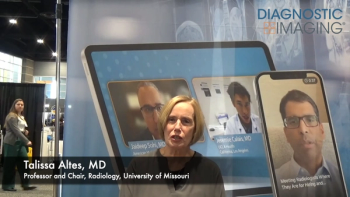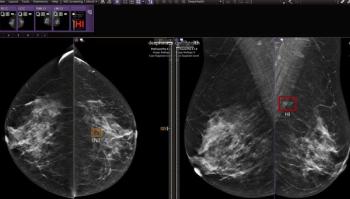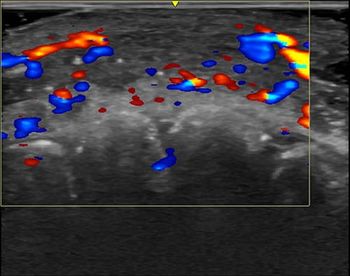
Wide-bore MR covers wide-bodied patients
Physical examination of bariatric patients is challenging. Radiology can play an important role, but only if the patients can be imaged. They sometimes cannot fit comfortably into a cylindrical high-field MR system. As a result, physicians may refer patients to lower field open systems, but lower field strength can pose a problem. The Magnetom Espree offers a solution.
Physical examination of bariatric patients is challenging. Radiology can play an important role, but only if the patients can be imaged. They sometimes cannot fit comfortably into a cylindrical high-field MR system. As a result, physicians may refer patients to lower field open systems, but lower field strength can pose a problem. The Magnetom Espree offers a solution.
Siemens' 1.5T scanner, which produced the whole-body image shown, offers more room than a traditional MR unit, addressing issues related to both obesity and claustrophobia. With its 70-cm-diameter bore, the Espree looks more like a CT than an MR scanner. The average distance between a patient's head and the magnet is 30 cm.
Equipped with TIM (total imaging matrix) technology, Espree delivers high-resolution images in a range of applications. The matrix body coil comprises up to 76 elements that can be combined with up to 32 RF channels, producing a signal-to-noise ratio four or more times higher than that of traditional open MR designs.
The Espree is just one of the Siemens' technologies that are being used to image bariatric patients; the company also offers the Somatom Sensation Open, a CT scanner with a gantry aperture and field-of-view measuring 82 cm in diameter. It is specifically designed for use in oncology, emergency medicine, interventional CT, and bariatrics. (Provided by Siemens Medical Solutions)
Newsletter
Stay at the forefront of radiology with the Diagnostic Imaging newsletter, delivering the latest news, clinical insights, and imaging advancements for today’s radiologists.




























